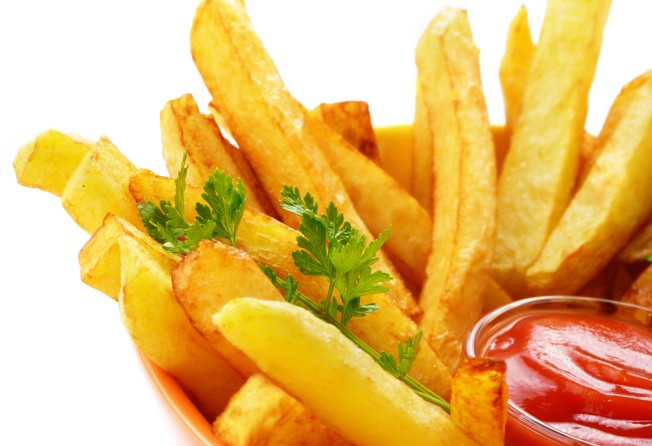
Hunger pangs of a geisha: Why eating French fries is strictly taboo for some women in Japan

A craving for fast food presents few obstacles to most people, but for Japan’s dainty, doll-like geishas, it calls for a daring undercover operation – and a cunning disguise.
While strictly taboo for a geisha to be seen munching French fries, some geiko – as they are known in the ancient city of Kyoto – and their young maiko apprentices have hatched a clever plan to avoid detection.
“It’s necessary to be very careful about the image we project,” celebrated geiko Kikumaru said, kneeling on the floor of a wooden teahouse in the fabled entertainment district of Gion.
“A maiko is basically banned from going into fast food restaurants, or trendy stores selling short skirts. But sometimes they just crave fried potatoes.
“When they do, we have to put on a pair of jeans and go and buy them some, and let them eat at home in secret.”

In the cloistered world of Kyoto’s five geisha quarters, known as hana-machi (flower towns), seemingly little has changed since their rise in the 17th century.
“It is a geiko’s duty to protect Japanese customs and culture which are dying out, and to continue those traditions,” Kikumaru explained. “When we go outside, we must always be careful about how we walk, our posture, our behaviour. No, we’re not allowed to be on Facebook or things like that.”
Adorned in crisp kimonos, their faces powdered white, geishas float elegantly along Gion’s cobbled streets between engagements at the district’s quaint, but cliquish, teahouses.
Skilled in Japanese arts such as dance, the lute and three-stringed shamisen, the job of a geiko – performing girl – is to entertain exclusive guests, normally over dinner or at banquets.
Their clients are often high-profile politicians or businessmen, who do not even know how much a night costs until they receive an eye-watering monthly bill.
Perceptions of geishas are often far from reality. Many among Kikumaru’s profession were horrified by the novel – and 2005 Hollywood hit movie – Memoirs of a Geisha whose subject, the former geisha Mineko Iwasaki, sued the book’s writer Arthur Golden for allegedly likening Kyoto’s famed hostesses to prostitutes.
“There are even Japanese people today who don’t fully understand a geisha’s craft,” Kikumaru said. “Movies exaggerate, of course. What specifically is it that’s different between that movie and a real-life geisha? Well, basically everything!”
“There are women who perform very different jobs to a geiko but somehow we were all painted the same colour.”
While some past geishas in other parts of Kyoto and Japan offered sex, those in Gion complain that foreigners often mistake them for prostitutes because of their showy outfits.
“There is no physical intimacy,” Kikumaru insisted. “A geiko is a confidante.”